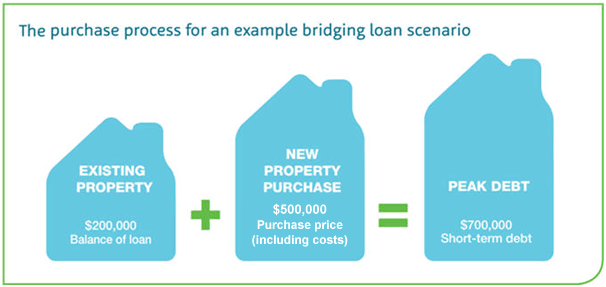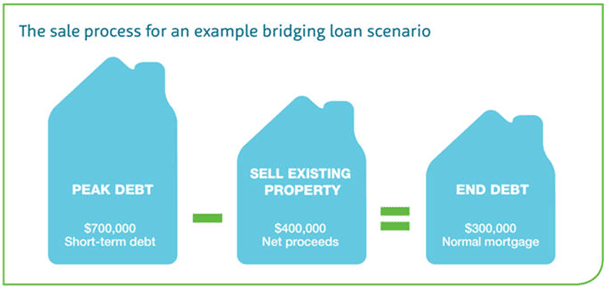How does a bridging loan work?
When you take out a bridging loan, the lender usually takes over the mortgage on your existing property as well as financing the purchase of the new property. The total amount borrowed is called the Peak Debt, and includes the balance of the loan on your existing home, the contract purchase price of the new home and any purchase costs such as stamp duty, legal fees and lenders fees.
The minimum repayments on a bridging loan will generally be calculated on an interest-only basis, and in many cases this interest may be capitalised until the existing home is sold – that is, accrued and added to the Peak Debt.
Once you sell your first property, the net proceeds of the sale (sale price minus any sale costs such as selling agent's fees) are used to reduce the Peak Debt. The remaining debt then becomes the End Debt, which is repaid as a standard mortgage product from this point onward.






